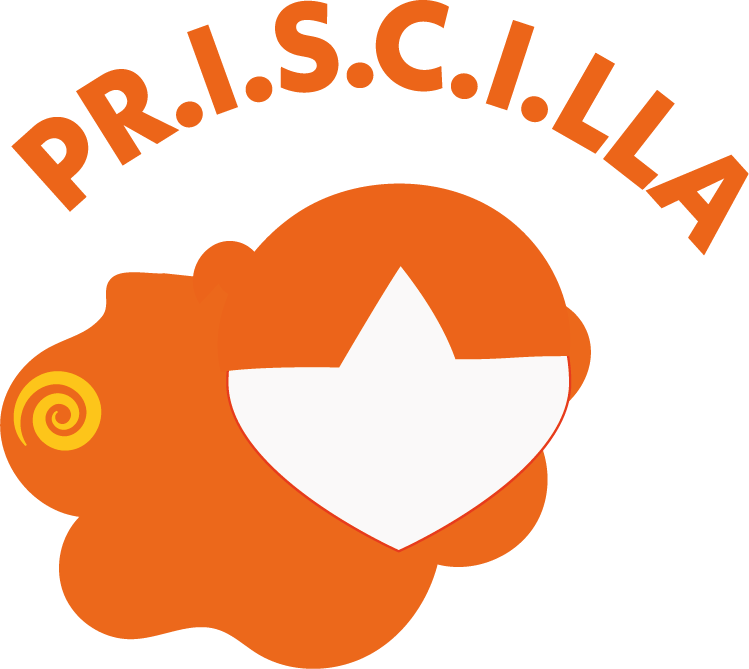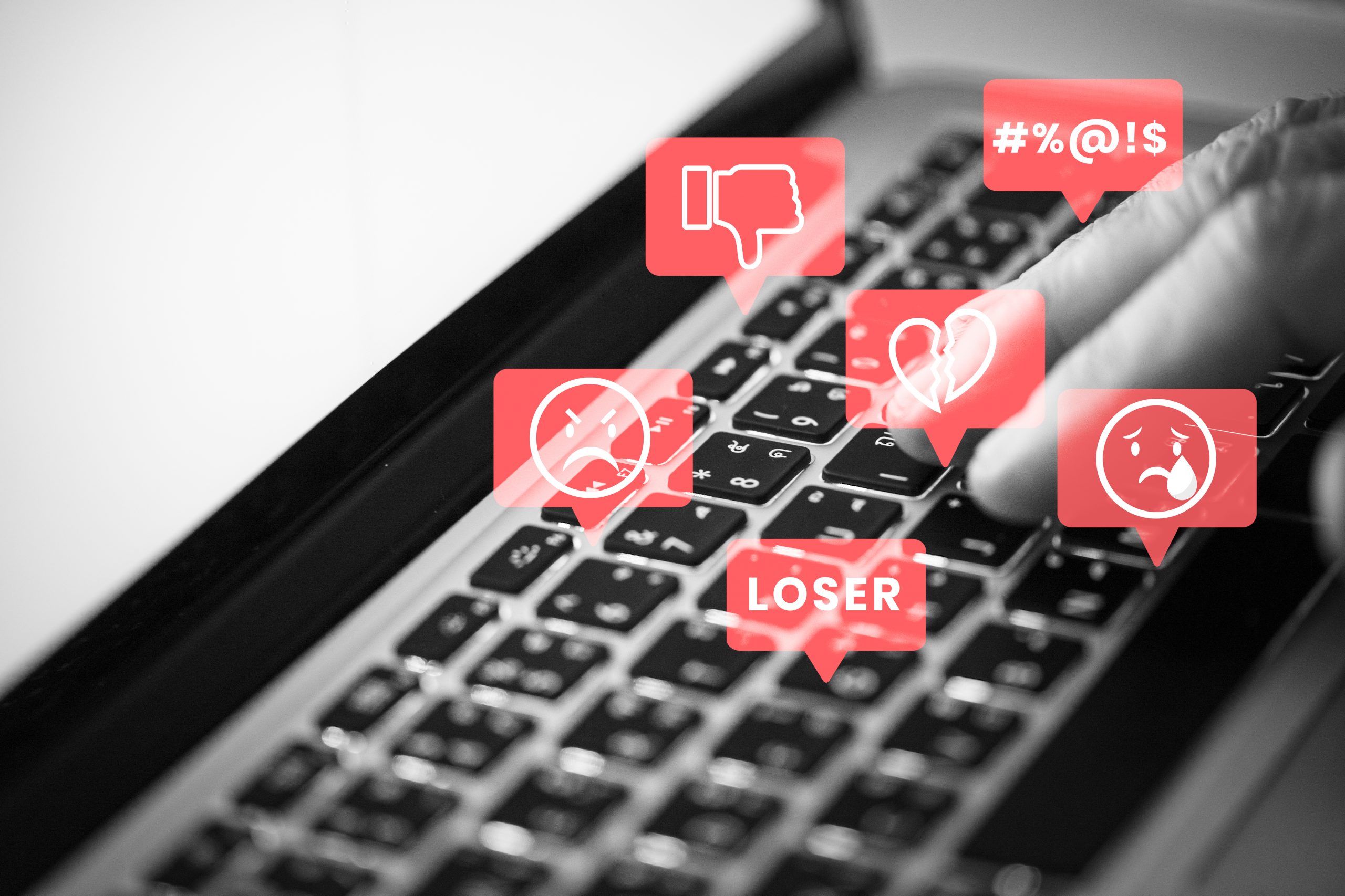In an increasingly digital world, social media platforms have become essential tools for communication, self-expression, and social participation. While much attention is given to the potential risks of these platforms, it is equally important to highlight the numerous opportunities they offer—particularly for young people with intellectual disabilities. Far from being just a space for entertainment, social media can serve as powerful channels for empowerment, connection, and genuine inclusion. When access is safe, supported, and adapted to individual needs, the benefits are wide-ranging and deeply impactful. Building meaningful social relationships For many people with intellectual disabilities, establishing and maintaining social relationships can be challenging due to communication, mobility, or social barriers. Social media removes many of these limitations by offering an accessible environment to connect with friends, family, activity peers, or new individuals with shared interests.These platforms help maintain bonds, share meaningful experiences, and, most importantly, foster a sense of belonging within a support network, which has a positive impact on mental and emotional well-being.Recent studies, such as the one presented at the International Congress on Communication and Digital Inclusion (Macho de Cos, I. (2023), emphasize that social media fosters sociability and offers a flexible space where individuals can interact at their own pace. A Space for self-expression and identity building The right to self-expression is universal, and social media offers a wide variety of channels for it: from images and videos to text posts, audio, comments, and reactions. For young people with intellectual disabilities, these platforms allow them to share emotions, opinions, interests, and ideas—contributing to the construction of a strong and positive personal identity.The ability to show who they are, what they like, and what they think has a direct impact on self-esteem. Additionally, this visibility helps others see them beyond stereotypes, promoting a more inclusive and just perception of disability. Developing digital autonomy Another key benefit of social media is the opportunity to acquire and develop independent digital skills. From creating a profile, engaging with content, or managing privacy settings, to understanding the difference between safe and unsafe interactions online—these are all essential steps toward greater autonomy.Progressively acquiring these competencies builds self-confidence and encourages independent decision-making. As emphasized by Fundación Amanecer, autonomy is closely linked to personal well-being, and the digital environment can be a great place to foster it.Naturally, this process must be accompanied by proper training and support from professionals, families, and educational environments. Active social participation and the right to be heard Social media also provides a space for civic engagement and rights advocacy. Through these platforms, people with intellectual disabilities can share their views, speak out against injustice, and take part in movements striving for a more equitable society.There are many examples of self-advocates and collectives using social media to highlight their struggles, achievements, and proposals. This type of participation holds educational and political value, contributing to societal change and more inclusive public discourse.As emphasized in the Spanish Journal of Disability, active engagement in social media helps improve self-esteem, a sense of belonging, and perceived personal effectiveness—three key elements in the identity formation of any young person. See also García-Pérez Calabuig, M., et al. (2024). Access to educational, cultural, and recreational content The internet and social networks are not only spaces for interaction but also provide extensive access to education, culture, and accessible entertainment. From video tutorials on cooking, sports, or crafts to accounts that share adapted news, rights information, and inclusive activities—these platforms can support personal development in numerous ways.Such access enables individuals to explore their interests and learn at their own pace, expanding their horizons and future opportunities.Platforms like YouTube or TikTok, when used with guidance, offer real opportunities to develop skills ranging from basic communication to more advanced competencies like audiovisual creativity or digital entrepreneurship.See examples in Down Madrid. (2023) and Mañas-Viniegra et al. (2023). Conclusion Social media can be powerful allies in the journey toward real inclusion for young people with intellectual disabilities. It is not only about allowing access to technology, but about ensuring safe, meaningful, and empowering participation in digital environments.This requires proper support, education, and adaptation, but also a shift in perspective: to recognize and value the capabilities that emerge when each individual is trusted and given the tools to thrive. Because everyone deserves the right to express themselves, connect, learn, and participate. And social media, when used responsibly and respectfully, can help make this a reality. #PositiveIdentity #SocialMediaSafety #IDYouthSupport Resources: – Macho de Cos, I. (2023). Uso y participación de las personas con discapacidad intelectual en las redes sociales y entornos virtuales. [Use and participation of people with intellectual disabilities in social media and digital environments]. International Congress on Communication and Digital Inclusion (CICID). [https://cicid.es](https://cicid.es/ponencia/uso-y-participacion-de-las-personas-con-discapacidad-intelectual-a-las-redes-sociales-y-entornos-virtuales) – García-Pérez Calabuig, M., et al. (2024). Empowerment and virtual stigma in social media: A socio-educational proposal for people with disabilities and mental disorders. European Public & Social Innovation Review. [https://epsir.net](https://epsir.net/index.php/epsir/article/view/1394) – Down Madrid. (2023). Training people with intellectual disabilities on digital safety and responsible social media use. [https://downmadrid.org](https://downmadrid.org/dia-redes-sociales-discapacidad-intelectual) – Mañas-Viniegra, L., et al. (2023). New technologies and the digital inclusion of people with disabilities: A challenge for communication, education and employability. ICONO14 Journal. [https://icono14.net](https://icono14.net/files/articles/2047-ES) – Fundación Amanecer. The benefits of autonomy in people with intellectual and developmental disabilities. [https://fundacionamanecer.org.es] (https://fundacionamanecer.org.es)
Staying safe and smart on Social Media
In today’s digital world, social media is an essential part of how we connect, learn, and share our thoughts with others. Platforms like Instagram, Facebook, and TikTok allow us to stay in touch with friends, discover new interests, and express ourselves creatively. However, with great connectivity comes great responsibility, especially when it comes to staying safe online. What is Social Media? Social media platforms are spaces on the internet where we can share photos, videos, and messages while keeping in touch with people worldwide. They help us communicate, learn new things, and connect with individuals who has the same interest as us. But while these spaces can be fun and engaging, they also come with risks that we need to be aware of. How to Stay Safe Online To enjoy social media responsibly, here are some key safety tips: Control Your Privacy Settings: Always check who can see what you share. Adjust your settings to ensure only trusted friends or family members can access your posts. Think Before You Share: Avoid posting personal information like your full name, address, phone number, or school name. Once something is online, it can be hard to remove. Be Mindful of Online Interactions: Not everyone online has good intentions. Be cautious when talking to strangers, and never meet someone in person without parental consent. Handle Negative Comments Wisely: Social media is a place to express yourself, but it’s also important to ignore or report harmful comments instead of engaging with negativity. Follow Reliable Sources: The internet is full of misinformation. Always verify facts before sharing news or believing what you see online. A Safe Space for Expression: Social media is a fantastic tool for creativity, learning, and connection—when used wisely. By following these safety tips, we can make sure our digital experience remains positive and secure. How about you? How do you use social media? Share your thoughts in the comments and join the conversation on responsible internet use! Resources UNICEF (2022). The State of the World’s Children: Digital Safety for Young People. Retrieved from https://www.unicef.org European Commission (2023). Safer Internet for Kids: A Guide for Parents and Educators. Available at https://ec.europa.eu/digital-strategy/safer-internet National Cyber Security Centre (2022). Staying Safe Online: A Guide for Individuals with Disabilities.Retrieved from https://www.ncsc.gov.uk PRISCILLA Project (2024). Educational Resources on Digital Inclusion and Internet Safety. Available at https://www.priscillaproject.eu Photo from Pexels by cottonbro
Cyberbullying and intellectual disabilities: Breaking the cycle of vulnerability
Bullying is a serious issue that has been studied extensively, particularly in European schools since the 1970s, thanks to the pioneering work of Dan Olweus. Initially, bullying was often seen as a normal part of growing up, but over time our understanding has changed. Today we recognise bullying as a harmful behaviour that can have long-lasting consequences. It is characterised by repeated aggressive actions, a power imbalance and emotional distress for the victim. An increasingly worrying form of bullying is cyberbullying, especially when it involves sexual harassment. As more and more young people interact online, bullying has moved beyond the classroom and into the digital world. Cyberbullying can include spreading rumours, sending hurtful messages or sharing private images without consent. A particularly harmful aspect is sexual cyberbullying, where explicit or inappropriate content is directed at the victim. This type of harassment can have serious emotional and psychological effects, making it a critical issue that demands our attention. Bullying and cyberbullying are even more pressing issues for young people with intellectual disabilities (ID). These individuals are often more likely to be bullied than their peers without disabilities. This vulnerability is often due to challenges such as limited social skills, less awareness of potential dangers and greater dependence on others for support. In some cases, people with intellectual disabilities may not fully understand the seriousness of cyberbullying, especially when it involves sexual content or exploitation. Research by Jenaro et al (2018) highlights that cyberbullying among adults with intellectual disabilities is a growing concern. They found that adults with ID often struggle to recognise abusive behaviour online and may not report incidents of cyberbullying due to fear, stigma or a lack of understanding about how to seek help. In addition, their findings highlight the role of social isolation and limited digital literacy as factors that increase the risk of victimisation. When cyberbullying involves sexual harassment, the consequences can be severe, including emotional trauma, social withdrawal and a decrease in overall well-being. The PR.I.S.C.I.L.LA project: Preventing Incident of Sexual Cyberbullying in Intellectual disability The PR.I.S.C.I.L.LA project aims to create an educational programme to help young people with intellectual disabilities navigate social media and the internet safely and responsibly. The programme focuses on ‘positive risk-taking’, encouraging participants to expand their social networks and build confidence, while minimising the risks of cyberbullying and online sexual harassment. The project has two main aims: First, it will provide an active learning based training programme for young people with intellectual disabilities. Second, it will provide a blended learning course for youth workers to help them support their clients to use digital tools safely. This approach will equip both young people and the professionals who work with them with the skills they need to navigate the digital world safely and protect themselves from online harm. Resources: Jenaro, Cristina; Flores, Noelia; Vega, Vanessa; Cruz, Maribel; Pérez, Ma. Carmen; Torres, Víctor A. . (2018). Cyberbullying among adults with intellectual disabilities: Some preliminary data. Research in Developmental Disabilities, 72(), 265–274. doi:10.1016/j.ridd.2017.12.006 Image from Freepik
Digital empowerment and challenges: finding the right balance
Life in today’s world is increasingly characterised by the constant presence and use of the Internet and social media. In a very short period of time, social communication patterns among young people have changed and the internet has given rise to innovative ways of making connections and building relationships (Löfgren-Mårtenson, 2008). However, for people with intellectual disabilities, the digital space can be an empowering tool or a source of challenges. Unlocking opportunities: Online social networking sites offer incredible opportunities for people with intellectual disabilities. Social media and the internet allow individuals to communicate with a wider audience, which can reduce feelings of loneliness and social barriers (Chadwick et al, 2013). Online environments offer the opportunity to stay in touch with friends, make new friends and find a community of people who share the same interests, encouraging the exchange of ideas and opinions, thereby enhancing self-esteem and interpersonal skills (Holmes et al, 2014). In addition, online platforms provide opportunities for social and romantic interactions, fostering a sense of independence and privacy (Löfgren-Mårtenson, 2008). Navigating the challenges: The digital world can also pose significant challenges and risks. Online conversations, because they take place without face-to-face confrontation, can expose people to potentially dangerous situations (Dunbar 2012). This risk is particularly high for the most vulnerable, who are more exposed to crimes such as financial fraud, harassment and sexual cyberbullying (Borgström et al 2019). Numerous testimonies from people with intellectual disabilities have reported negative experiences of using social media, including receiving unwanted messages with offensive comments or requests of an explicitly sexual nature (Holmes et al, 2014). The role of caregivers: Parents and caregivers have been identified as key supporters of technology use by people with intellectual disabilities, although this often involves forms of control and restrictions (Löfgren-Mårtenson, 2008; Palmer et al. 2012). Specifically, these strict boundaries occur because caregivers consider these people to be particularly vulnerable and try to protect them from online risks by restricting their access to the internet (Molin et al., 2015). However, these behaviours can limit the development of self-determination and independence of people with intellectual disabilities, leading to a disconnection from the vast opportunities offered by the Internet (Löfgren-Mårtenson, 2004). The importance of education and awareness raising: In order to promote the safe and independent use of the internet, it is essential to educate and raise awareness on the issue, teaching people with intellectual disabilities the importance of the digital space, how to use it correctly and how to deal with potential problems that may arise (Chiner et al., 2017). It is also important to involve carers and educate them to adopt a shared decision-making approach and negotiation processes to ensure safe use of the internet, while respecting the privacy and autonomy of people with intellectual disabilities (Seale, 2014). While the online world and social networks are a source of potential risks, they also offer many opportunities for personal and social growth for people with intellectual disabilities (Holmes et al, 2014). Only a deeper understanding of these aspects will make it possible to promote an inclusive, responsible and safe use of the internet for these people (Chiner et al, 2017). References Borgström, Å., Daneback, K., & Molin, M. (2019). Young people with intellectual disabilities and social media: A literature review and thematic analysis. Scandinavian Journal of Disability Research, 21(1), 129-140. Chadwick, D., Wesson, C., & Fullwood, C. (2013). Internet access by people with intellectual disabilities: Inequalities and opportunities. Future internet, 5(3), 376-397. Chiner, E., Gómez‐Puerta, M., & Cardona‐Moltó, M. C. (2017). Internet use, risks and online behaviour: The view of internet users with intellectual disabilities and their caregivers. British Journal of Learning Disabilities, 45(3), 190-197. Dunbar R. (2012) Social networks. New Scient, 214: 1–9. Holmes, K. M., & O’Loughlin, N. (2014). The experiences of people with learning disabilities on social networking sites. British Journal of Learning Disabilities, 42(1), 1-5. Löfgren-Mårtenson, L. (2004). “May I?” About sexuality and love in the new generation with intellectual disabilities. Sexuality & Disability, 22(3), 29-3 Löfgren-Mårtenson, L. (2008) ‘Love in Cyberspace: Swedish Young People with Intellectual Disabilities and the Internet1’, Scandinavian Journal of Disability Research, 10(2), p. 125-138. Available at: https://doi.org/10.1080/15017410701758005. Molin, M., Sorbring, E., & Löfgren-Martenson, L. (2015). Teachers’ and parents’ views on the Internet and social media usage by pupils with intellectual disabilities. Journal of Intellectual Disabilities, 19(1), 22-33. doi:10.1177/1744629514563558 Seale, J. (2014). The role of supporters in facilitating the use of technologies by adolescents and adults with learning disabilities: a place for positive risk-taking. European Journal of Special Needs Education, 29(2), 220-236. doi: http://dx.doi.org/10.1080/08856257.2014.906980 PH Samson Katt





